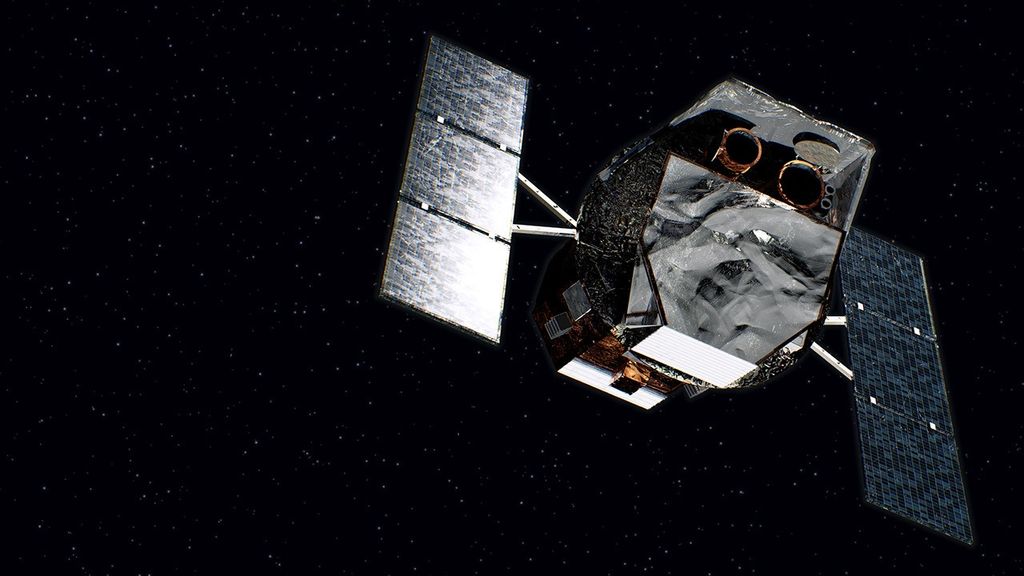Spitzer Space Telescope 3D Model
| Credit | NASA Visualization Technology Applications and Development (VTAD) |
|---|---|
| Language |
|
The Spitzer Space Telescope is an infrared observatory studying objects ranging from our solar system to the distant reaches of the universe. Spitzer is one of NASA's Great Observatories. The space telescope illuminated some of the oldest galaxies in the universe, revealed a new ring around Saturn, and peered through shrouds of dust to study newborn stars and black holes. Spitzer assisted in the discovery of planets beyond our solar system, including the detection of seven Earth-size planets orbiting the star TRAPPIST-1, among other accomplishments.
Initially scheduled for a minimum 2.5-year primary mission, Spitzer Space Telescope far exceeded its expected lifetime; its mission will end on Jan. 30, 2020.
Spitzer is a technological marvel, featuring many innovations never before used on a space mission. It stands about 13 feet (4 meters) tall, and weighs approximately 1,906 pounds.
Spitzer's primary mission ended up lasting 5.5 years, during which time the spacecraft operated in a "cold phase," with a supply of liquid helium cooling three onboard instruments to just above absolute zero. The cooling system reduced excess heat from the instruments themselves that could contaminate their observations.
In July 2009, after Spitzer's helium supply ran out, the spacecraft entered a so-called "warm phase." Spitzer's main instrument, called the Infrared Array Camera (IRAC), has four cameras, two of which continue to operate.
Spitzer orbits the Sun in an Earth-trailing orbit (meaning it literally trails behind Earth as the planet orbits the Sun) and has continued to fall farther and farther behind Earth during its lifetime. This now poses a challenge for the spacecraft, because while it is downloading data to Earth, its solar panels do not directly face the Sun. As a result, Spitzer must use battery power during data downloads. The batteries are then recharged between downloads.
"Spitzer is farther away from Earth than we ever thought it would be while still operating," said Sean Carey, manager of the Spitzer Science Center at Caltech in Pasadena, California. "This has posed some real challenges to the engineering team, and they've been extremely creative and resourceful to keep Spitzer operating far beyond its expected lifetime."



























